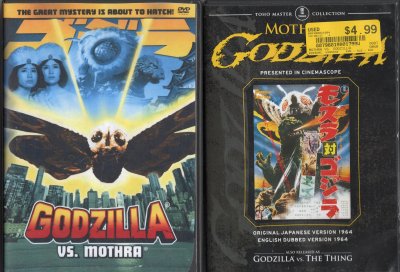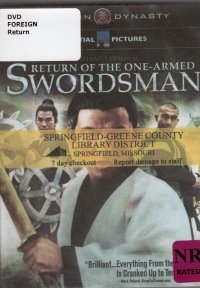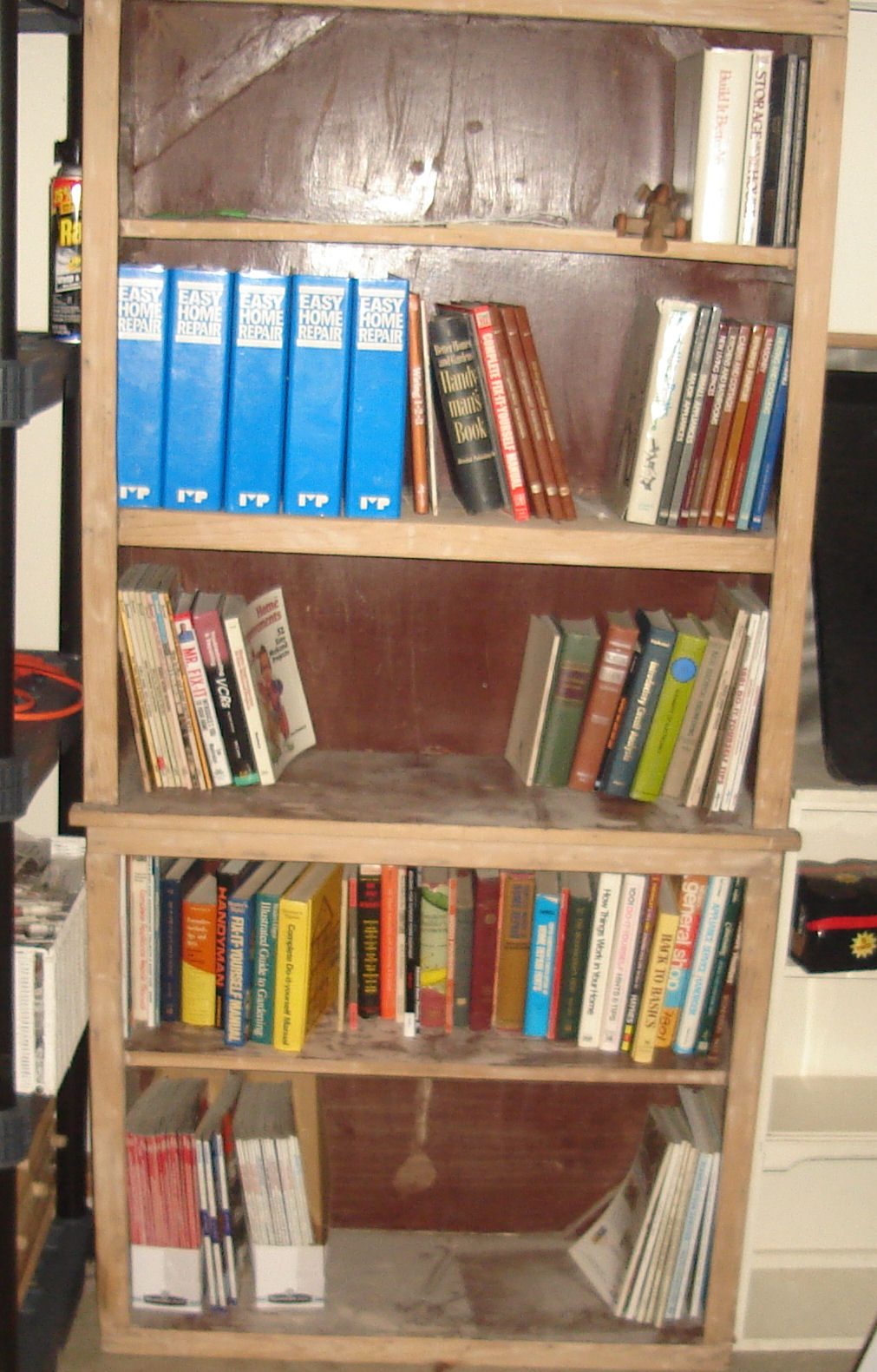 When I shelved the two new Toho monster movies that I bought in April–well, topped them as “shelving” them means putting them atop my unwatched video cabinet–I put them by the old Godzilla movie I already had up there. And I did not look closely, and it was only when I picked one to watch the other night that I realized I had Godzilla vs. Mothra and Mothra vs. Godzilla. Which, it turns out, are two releases of the same film (also known as Godzilla vs. The Thing, which is how I think I originally saw it forty-some years ago).
When I shelved the two new Toho monster movies that I bought in April–well, topped them as “shelving” them means putting them atop my unwatched video cabinet–I put them by the old Godzilla movie I already had up there. And I did not look closely, and it was only when I picked one to watch the other night that I realized I had Godzilla vs. Mothra and Mothra vs. Godzilla. Which, it turns out, are two releases of the same film (also known as Godzilla vs. The Thing, which is how I think I originally saw it forty-some years ago).
So: An egg washes ashore after a great taifun (after reading Shōgun, watch I drop transliterated Japanese words in blog posts for a couple of weeks). The fishermen sell it to a Businessman who, with his business partner, are going to make an attraction of it. Two little fairy-sized singers come to ask them to return the egg to its home from whence it was washed during the taifun (doesn’t count; it’s the same word re-used). When the Businessmen rebuff them, they turn to a Reporter, a Photographer, and a Scientist to help them. A Politician moves forward with building an industrial area after the storm, but this awakens Godzilla (this picture is the last of the Toho era where he is the antagonist) who starts destroying things. The Reporter, the Photographer, and the Scientist go to the home island of the fairy girls and the home of Mothra to seek his/her/its help in defeating Godzilla. And, after the egg hatches, Godzilla is dispatched into the sea. Until next time.
I capitalized the characters by their job titles instead of names because, c’mon, they’re archetypes, ainna?
Oh, man, did this film make me think of the olden days. On Saturday afternoons, one of the television stations in Milwaukee had a Creature Feature where they played these old Toho Godzilla movies along with classic Universal monster movies and the like, hosted by a Svengoolie knock-off. I remember seeing at least the end of this film because I didn’t understand what it meant when the recently-hatched caterpillars head out to sea, and my sainted mother explained they were returning to their home island. So I knew that much, anyway. Perhaps the original Mothra movie ended in a similar fashion. I can’t be arsed to look.
When I was at my brother’s house recently, a commercial for an upcoming bloc of twenty-year-old movies had my nephew exclaim, “Hot Tub Time Machine 2 is twenty years old?” (It is not, actually.) I asked him if that’s the first time he’s experienced the double-decade ago. It’s funny, but when I saw this film on Milwaukee television, it would have been less than fifteen years old. But it definitely looks different, more archaic, even then compared to how 21st century movies have changed (more looking like video games in big budget pictures, but Hot Tub Time Machine 2 wasn’t that).
So I suppose I will view the other monster movie (Rodan) sometime soon, and I have to think of how to dispose of my duplicate copy of this film. Which is not a true duplicate, but good enough. Free book cart at church? Maybe!



 I picked this up in
I picked this up in  As I mentioned when I bought this book
As I mentioned when I bought this book  After I read the first of C.S. Lewis’s Space Trilogy (Out of the Silent Planet), I thought I would pick up something short as a palate-cleanser. Brother, did I go wrong: This 1200+ page book, which I just bought
After I read the first of C.S. Lewis’s Space Trilogy (Out of the Silent Planet), I thought I would pick up something short as a palate-cleanser. Brother, did I go wrong: This 1200+ page book, which I just bought 


 You know, I would not have expected to watch this film, as it is on a streaming service and I’m an old school media kind of guy. But a week ago, we visited my brother and his family, and they have all the streaming services, and so we watched this film.
You know, I would not have expected to watch this film, as it is on a streaming service and I’m an old school media kind of guy. But a week ago, we visited my brother and his family, and they have all the streaming services, and so we watched this film.

